|
|
Post by holajonathan on Nov 10, 2021 10:57:46 GMT -5
I have finished slabbing about 40 to 50 pounds. Here is a representative sample. Photos taken with a Canon EOS M3 (mirrorless interchangeable lens camera) and Canon EF-M 28mm f/3.5 Macro lens. I usually post cell phone photos. All shot in aperture priority mode with aperture @ f9. Color is a little off in a lot of them. I manually set white balance in full sun, and whenever a cloud would pass by, the light changed and colors got screwy. 1. 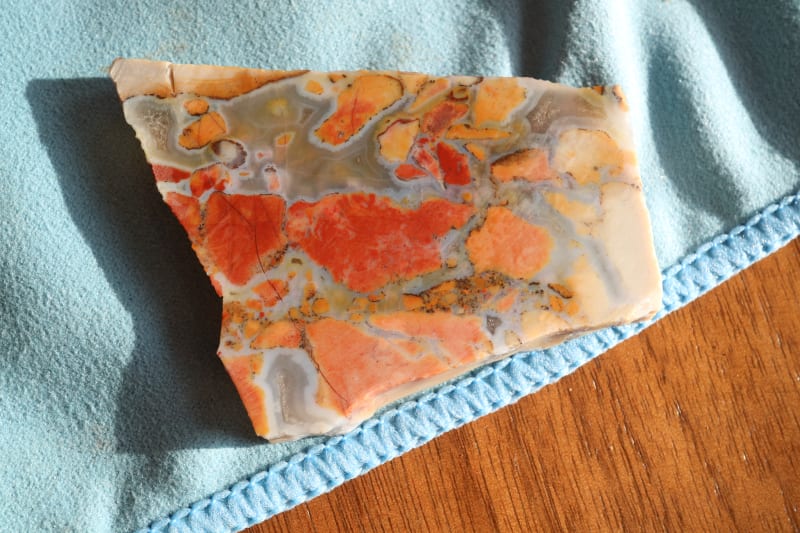 2.  3.  4.  5. 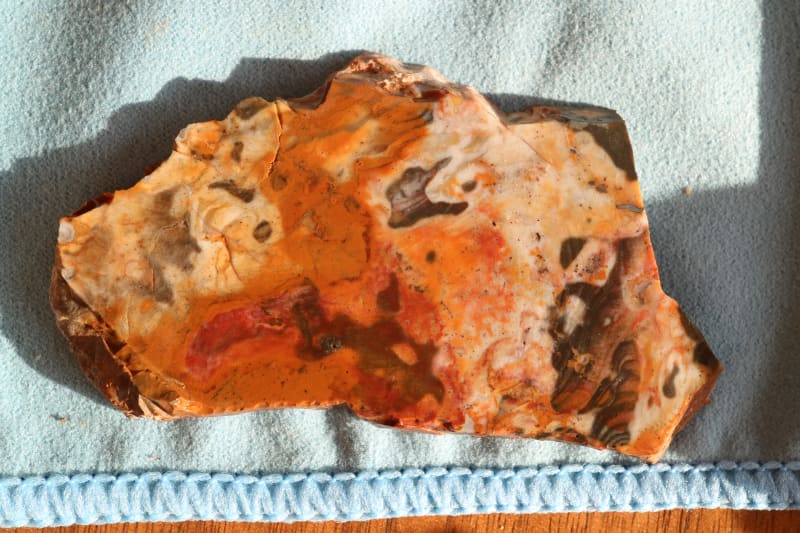 6.  7.  8.  9. 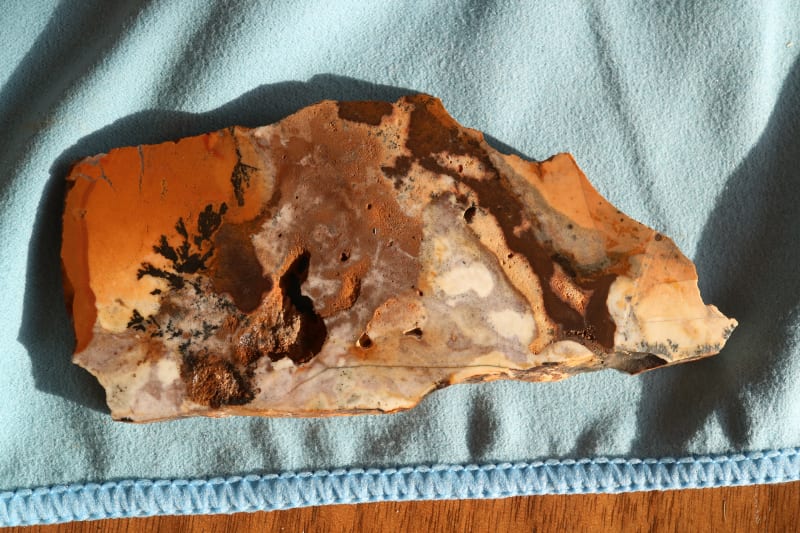 10.  11.  12. 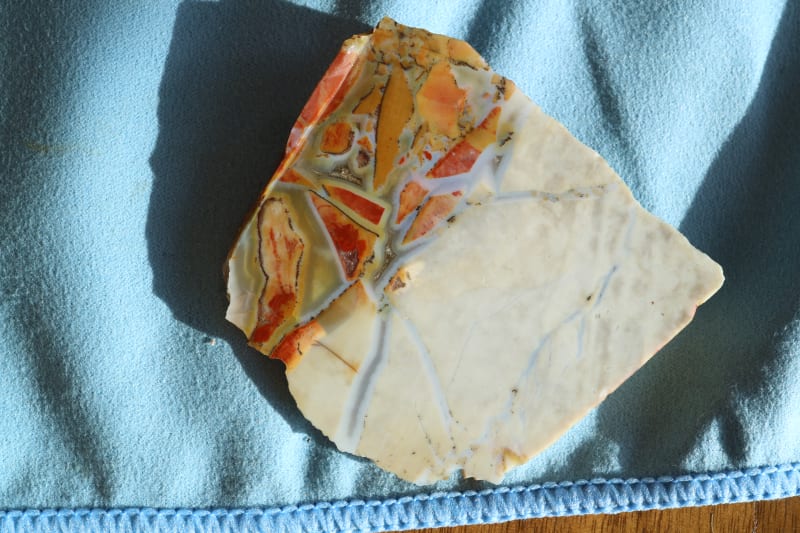 13. 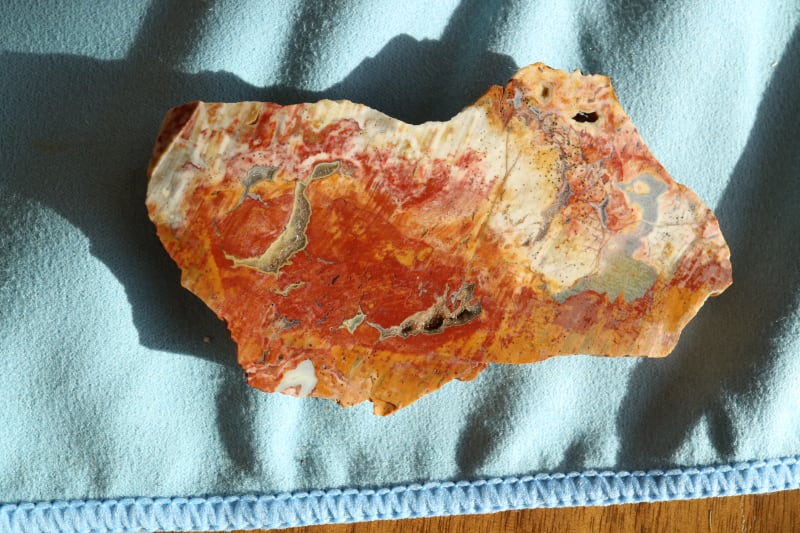 14. 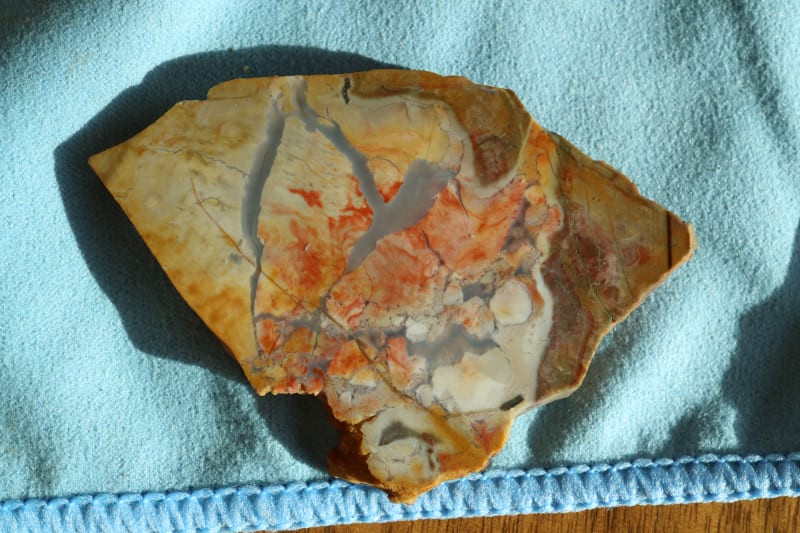 15.  16.  17. 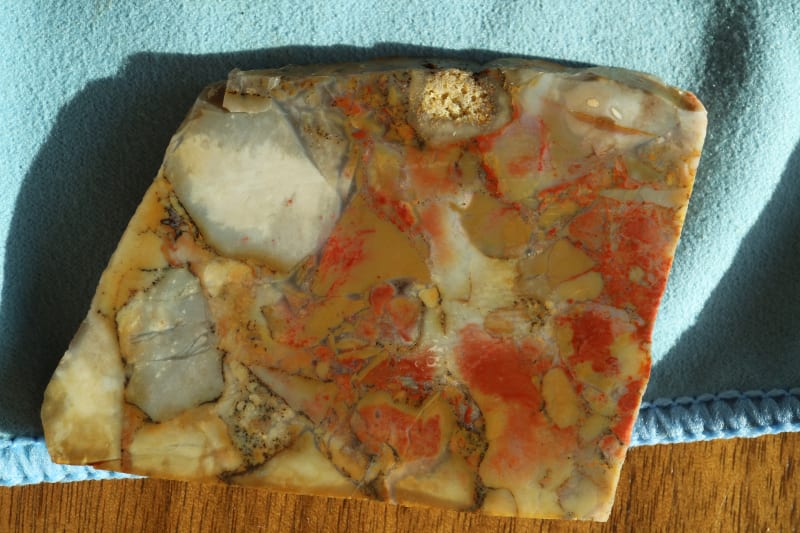 18. 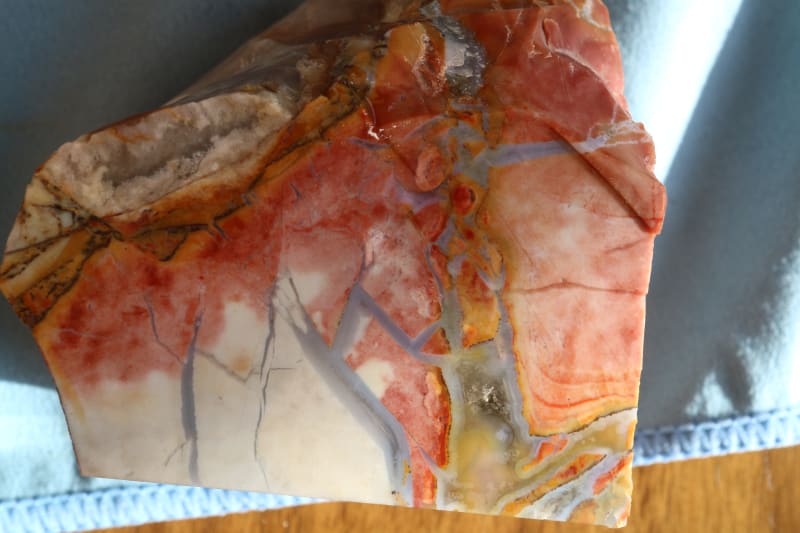 19. 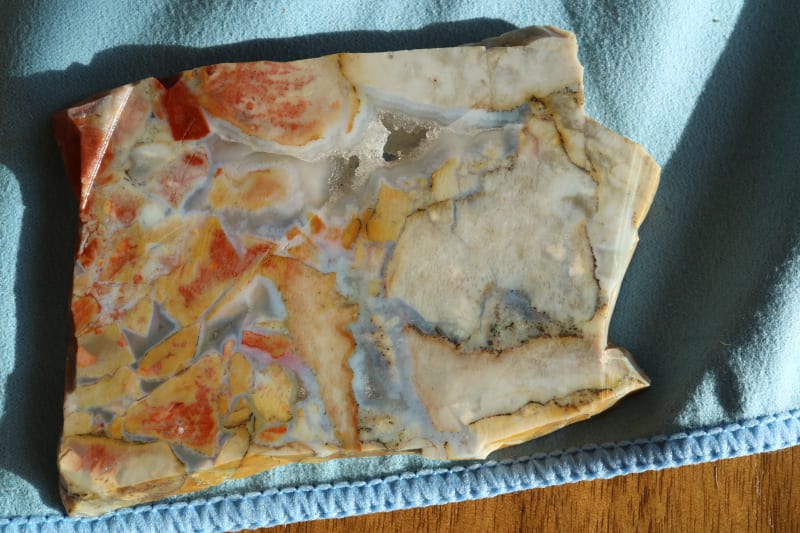 20.  21.  22.  23.  24.  25.  26.  27.  28.  29.  30.  31.  32.  33.  34.  35.  36. 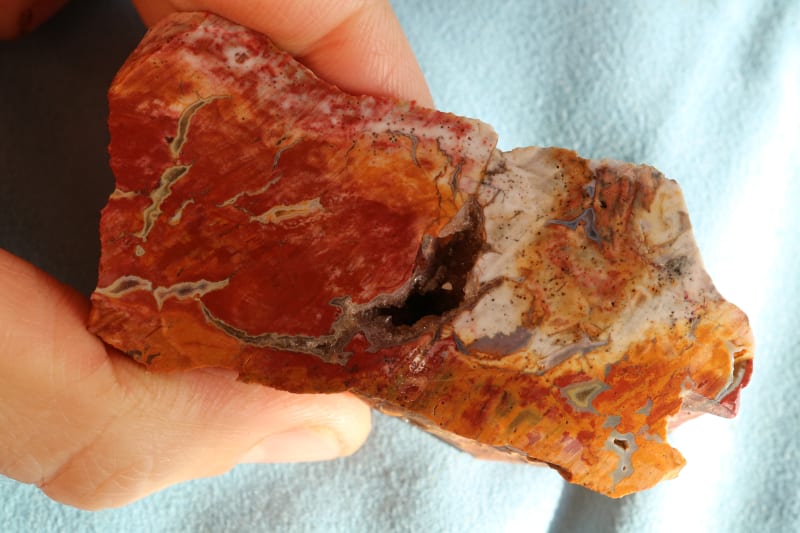 Macro 1:  Macro 2:  Macro 3:  Macro 4:  Macro 5: 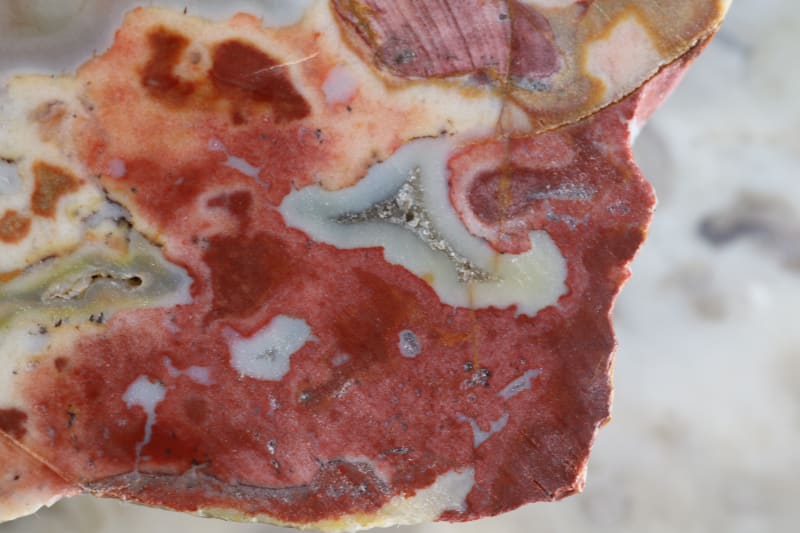 Macro 6: 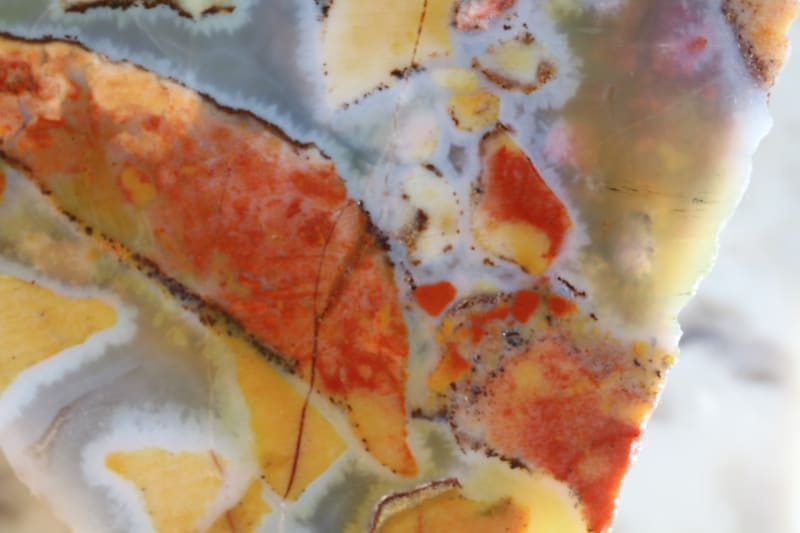 Macro 7:  Macro 8:  Macro 9:  Macro 10:  Macro 11: 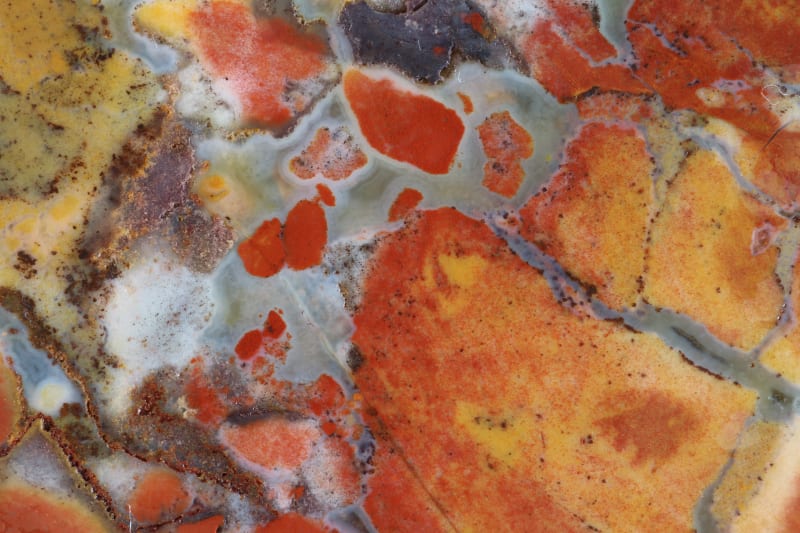 Macro 12:  Macro 13: 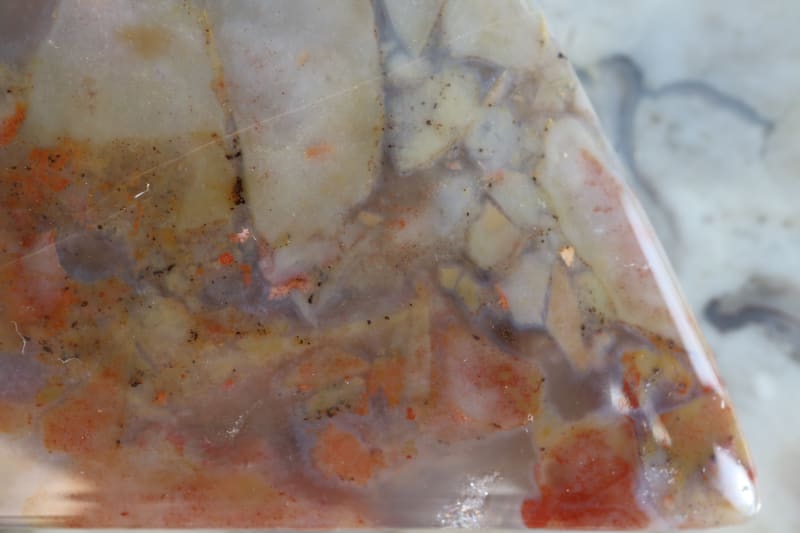 Macro 14:  Macro 15:  Macro 16: 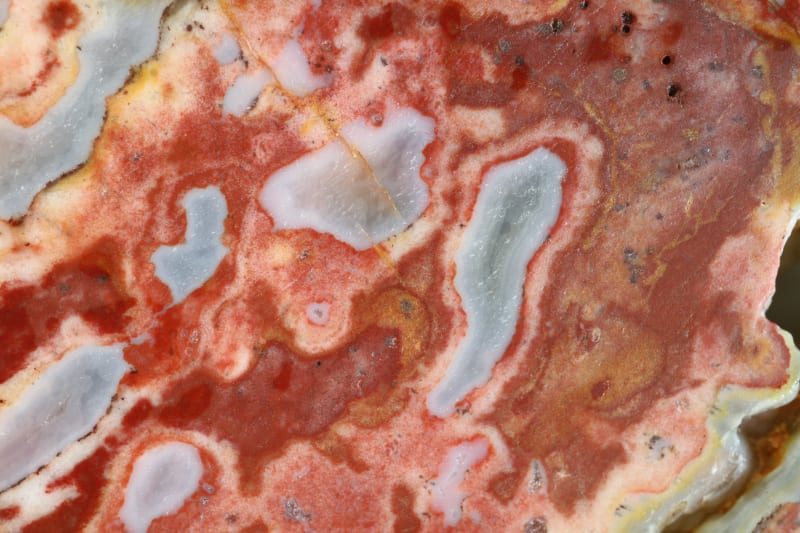 Macro 17:  Macro 18: 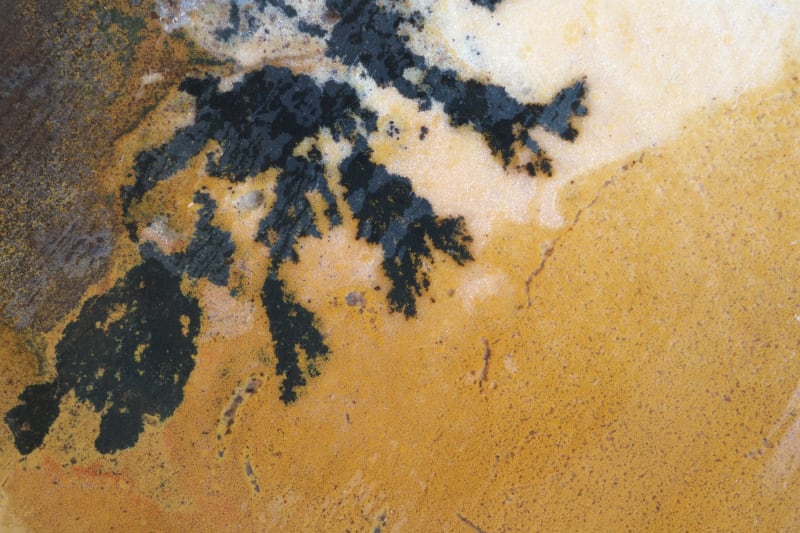 Macro 19:  Macro 20:  Macro 21: 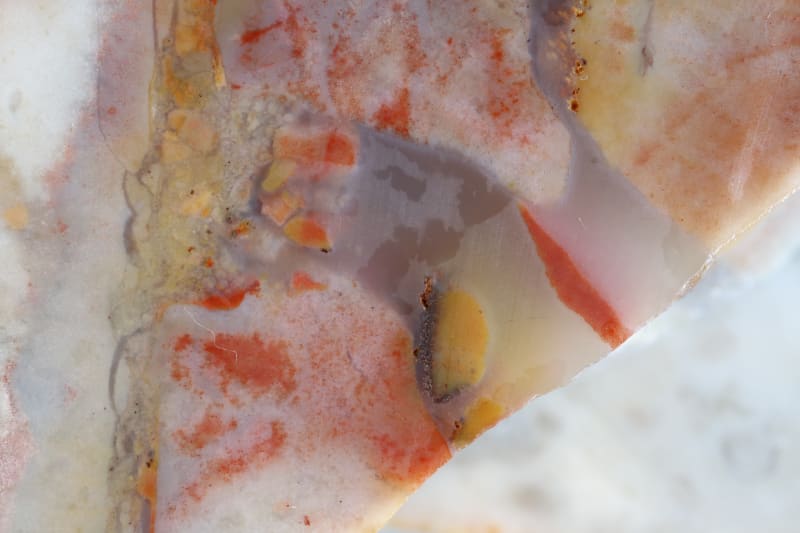 |
|
|
|
Post by Jugglerguy on Nov 10, 2021 11:08:05 GMT -5
The variety in that material is just amazing. I have some very colorful slabs on my hands too. I really like the close up pictures at the end.
|
|
|
|
Post by holajonathan on Nov 10, 2021 11:36:42 GMT -5
Jugglerguy The closeups are fun and will be more fun once polished. If a large vibe tumbler that I bought ever arrives (on back order since September) I plan to tumble a lot of the small slabs. The macro lens that I used has a very close focusing distance. I could have gotten closer for higher magnification (it will focus down to something like 1" from the front of the lens). But the lens itself creates shadows when that close, something that I didn't feel like dealing with.   
|
|
|
|
Post by rockjunquie on Nov 10, 2021 17:41:18 GMT -5
Wow! That's a a lot of cutting. That flint seems to be the great imitator. Some of it is a dead ringer for pet wood!
|
|
|
|
Post by holajonathan on Nov 10, 2021 18:35:34 GMT -5
Wow! That's a a lot of cutting. That flint seems to be the great imitator. Some of it is a dead ringer for pet wood! The photos are about 10% of what I cut.  When I said 40-50 pounds, that's the amount of slabs. More importantly, I'd say I've got 10-15 pounds of really nice slabs that are worth cabbing. |
|
saxplayer
fully equipped rock polisher
  
Member since March 2018
Posts: 1,327
|
Post by saxplayer on Nov 10, 2021 19:03:24 GMT -5
Sweet work!
|
|
|
|
Post by jasoninsd on Nov 10, 2021 19:11:50 GMT -5
Jonathan, those really are some great examples of what this flint can provide!
I totally agree with Tela! In some of your specimens, I can see Picture Jasper, Prairie Agate, Petrified Wood, Brecciated Jasper...pretty amazing!
I think some of my favorite examples of this flint are the ones in macro 15 & 16! Macro 18 shows the close-up of that black area, which in the original picture, I thought it was dendrites!
|
|
CLErocks
spending too much on rocks
 
Member since October 2021
Posts: 342
|
Post by CLErocks on Nov 10, 2021 21:32:23 GMT -5
Wow! So beautiful! Just stunning!!
|
|
|
|
Post by stephan on Nov 10, 2021 23:52:42 GMT -5
Cool stuff. That’ll keep you busy for a while.
|
|
|
|
Post by holajonathan on Nov 11, 2021 1:09:25 GMT -5
Cool stuff. That’ll keep you busy for a while. It would take me two or three years to cab the Ohio flint that I just finished slabbing. I'm pretty sure I just like cutting rocks. What I do with them is another matter altogether.  |
|
|
|
Post by holajonathan on Nov 11, 2021 1:15:33 GMT -5
Jonathan, those really are some great examples of what this flint can provide! I totally agree with Tela! In some of your specimens, I can see Picture Jasper, Prairie Agate, Petrified Wood, Brecciated Jasper...pretty amazing! I think some of my favorite examples of this flint are the ones in macro 15 & 16! Macro 18 shows the close-up of that black area, which in the original picture, I thought it was dendrites! You know, I feel like I barely scratched the surface in terms of the variety that is available at Nether's Farm. I only (successfully) mined any rocks from tiny areas of two pits. The rest I surface collected -- presumably tailings from flint knappers. It is hard to describe how many rocks are just laying around, although it is a slow process to clean them and window them to find out if they are good rocks. I bet there are at least 100 common patters / color combinations in the ground, not to mention all of the odd-ball unique rocks. The fact that they look similar to so many other agate / jasper / pet wood varieties is a good reminder, I suppose, of the common geological processes that formed so many of the silica based lapidary materials. If you like the one in macro 15 and 16 you are in luck, because that may be the largest rock I brought home. It must be a 10 pounder, and I've only slabbed about half of it. I'm sick of cutting this stuff, so maybe I'll give you thick slice from that rock so you can cut a little for yourself. |
|
|
|
Post by Peruano on Nov 11, 2021 9:33:57 GMT -5
Don't I remember a thread who someone authoritatively opined that Ohio Flint was not flint but . . . .?
|
|
AzRockGeek
has rocks in the head
  
Member since September 2016
Posts: 703
|
Post by AzRockGeek on Nov 11, 2021 9:37:09 GMT -5
Those are nice slabs. Are you going to try heat treating any of them?
|
|
|
|
Post by hummingbirdstones on Nov 11, 2021 9:55:29 GMT -5
Those are a bunch of tasty slabs! Beautiful stuff. Thanks for allowing my eyes a feast.  |
|
|
|
Post by jasoninsd on Nov 11, 2021 11:24:44 GMT -5
Jonathan, those really are some great examples of what this flint can provide! I totally agree with Tela! In some of your specimens, I can see Picture Jasper, Prairie Agate, Petrified Wood, Brecciated Jasper...pretty amazing! I think some of my favorite examples of this flint are the ones in macro 15 & 16! Macro 18 shows the close-up of that black area, which in the original picture, I thought it was dendrites! You know, I feel like I barely scratched the surface in terms of the variety that is available at Nether's Farm. I only (successfully) mined any rocks from tiny areas of two pits. The rest I surface collected -- presumably tailings from flint knappers. It is hard to describe how many rocks are just laying around, although it is a slow process to clean them and window them to find out if they are good rocks. I bet there are at least 100 common patters / color combinations in the ground, not to mention all of the odd-ball unique rocks. The fact that they look similar to so many other agate / jasper / pet wood varieties is a good reminder, I suppose, of the common geological processes that formed so many of the silica based lapidary materials. If you like the one in macro 15 and 16 you are in luck, because that may be the largest rock I brought home. It must be a 10 pounder, and I've only slabbed about half of it. I'm sick of cutting this stuff, so maybe I'll give you thick slice from that rock so you can cut a little for yourself. Well, you know I'm all about trying to help people out...and if you're tired of cutting that piece, I'll gladly take that off your hands...you know...to help your mental state about it.  Not that I'm all that knowledgeable about different materials...but I don't know of another material that has such a variety within it as this Nether's Farm material... Don't I remember a thread who someone authoritatively opined that Ohio Flint was not flint but . . . .? That absolutely makes sense about some of the material. There are pieces that I would think would/should be classified as flint...and others that I don't believe are anywhere close to being flint... |
|
|
|
Post by holajonathan on Nov 11, 2021 13:46:27 GMT -5
Don't I remember a thread who someone authoritatively opined that Ohio Flint was not flint but . . . .? A geologist would call it a mix of chert (opaque microcrystalline quartz), chalcedony (translucent microcrystalline quartz), and macrocrystalline quartz (large quartz crystals). Don't you think? Those in the lapidary world can call it whatever they want, I suppose, since there is no authority or agreement on the differences among flint / chert / jasper / chalcedony / agate. Using common lapidary naming conventions, I would call it jasper and sometimes brecciated jasper. It is too colorful and pretty to be chert or flint -- a completely subjective distinction. I think the flint name is what stuck because historically it was used by Native Americans for arrowheads and other tools. Flint is generally the name used in that context. Similarly, modern day flint knappers seem to be those most interested in the material today, and they are perfectly happy calling it flint. If it were ever commercially mined as a lapidary material (I'm not sure why that hasn't happened), my guess is that it would be called jasper. |
|
|
|
Post by Son Of Beach on Nov 11, 2021 14:31:49 GMT -5
Don't I remember a thread who someone authoritatively opined that Ohio Flint was not flint but . . . .? A geologist would call it a mix of chert (opaque microcrystalline quartz), chalcedony (translucent microcrystalline quartz), and macrocrystalline quartz (large quartz crystals). Don't you think? Those in the lapidary world can call it whatever they want, I suppose, since there is no authority or agreement on the differences among flint / chert / jasper / chalcedony / agate. Using common lapidary naming conventions, I would call it jasper and sometimes brecciated jasper. It is too colorful and pretty to be chert or flint -- a completely subjective distinction. I think the flint name is what stuck because it was historically used by Native Americans for making arrowheads and other tools. Flint is the name generally used in that context. Similarly, modern day flint knappers seem to be those most interested in the material now, and they are perfectly happy calling it flint. If it were ever commercially mined as a lapidary material (I'm not sure why that hasn't happened), my guess is that it would be called jasper. Sounds about right Flint vs Chertgeology.com/rocks/flint-chert-jasper/ |
|
|
|
Post by Peruano on Nov 13, 2021 17:44:54 GMT -5
The same quandary exist in New Mexico where the Spanish speakers named Pedernal Peak(meaning flint peak). Made famous for two reasons. O'Keefe liked to paint the flat topped mountain and more importantly the prepueblo Indians often called the Ansazi made 90% of their tool that were not obsidian from the( yes) chert from the Mt. The rock hounds came along and often termed the material agate (hey it was colored black and pink and whitish so it wanted to be agate. We lay folks just think we know what we are talking about.
|
|
|
|
Post by holajonathan on Nov 14, 2021 2:27:02 GMT -5
The same quandary exist in New Mexico where the Spanish speakers named Pedernal Peak(meaning flint peak). Made famous for two reasons. O'Keefe liked to paint the flat topped mountain and more importantly the prepueblo Indians often called the Ansazi made 90% of their tool that were not obsidian from the( yes) chert from the Mt. The rock hounds came along and often termed the material agate (hey it was colored black and pink and whitish so it wanted to be agate. We lay folks just think we know what we are talking about. Thanks for the anecdote, Tom. Do you have any of this Pedernal flint chert agate? I've love to see a photo of it. And if you've got more than you need, I'll trade you a little Ohio flint for a little NM flint. |
|
|
|
Post by fernwood on Nov 14, 2021 6:03:50 GMT -5
Amazing variety of patterns and colors.
I wonder how common dendritic flint is?
|
|































































 When I said 40-50 pounds, that's the amount of slabs. More importantly, I'd say I've got 10-15 pounds of really nice slabs that are worth cabbing.
When I said 40-50 pounds, that's the amount of slabs. More importantly, I'd say I've got 10-15 pounds of really nice slabs that are worth cabbing. 















